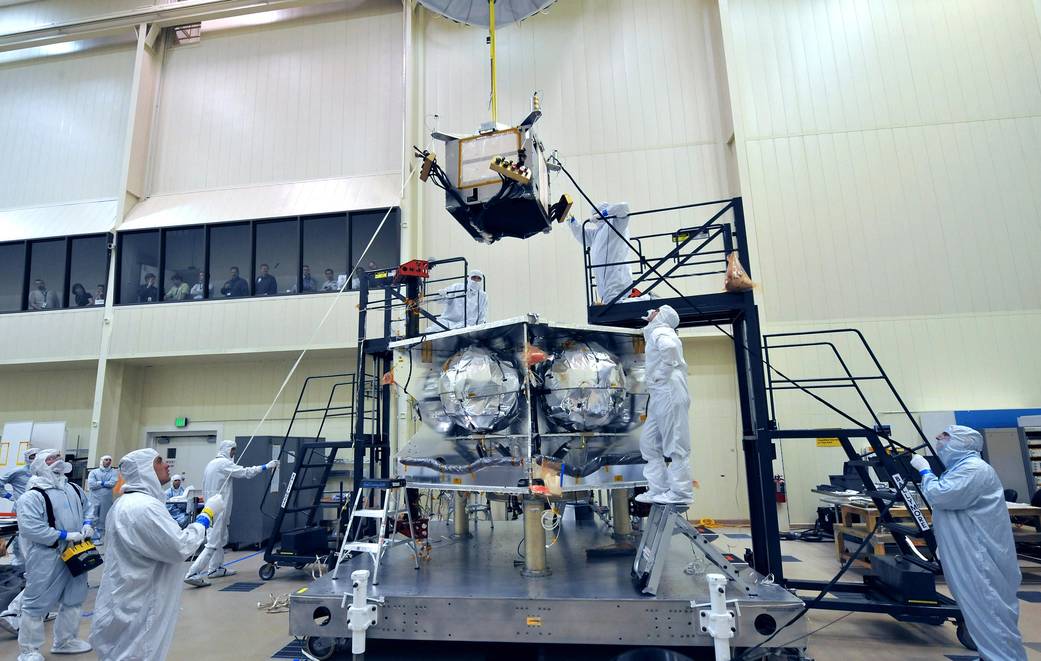
Technicians installed a special radiation vault onto the propulsion module of NASA’s Juno spacecraft. The radiation vault has titanium walls to protect the spacecraft’s electronic brain and heart from Jupiter’s harsh radiation environment. The vault will dramatically slow the aging effect radiation has on the electronics for the duration of the mission. Each titanium wall measures nearly a square meter (nearly 10 square feet) in area and about 1 centimeter (a third of an inch) in thickness. With more than 20 electronic assemblies inside, the whole vault weighs about 200 kilograms (500 pounds). This image was taken on May 19, 2010, in a clean room at Lockheed Martin Space Systems, Denver, during Juno’s assembly process.
NASA’s Jet Propulsion Laboratory, a division of the California Institute of Technology, Pasadena, manages the Juno mission for the principal investigator, Scott Bolton, of Southwest Research Institute, San Antonio. Lockheed Martin Space Systems is building the spacecraft. The Italian Space Agency, Rome, is contributing an infrared spectrometer instrument and a portion of the radio science experiment. For more information about Juno visit https://www.nasa.gov/juno .
Image Credit: NASA/JPL-Caltech/LMSS


























